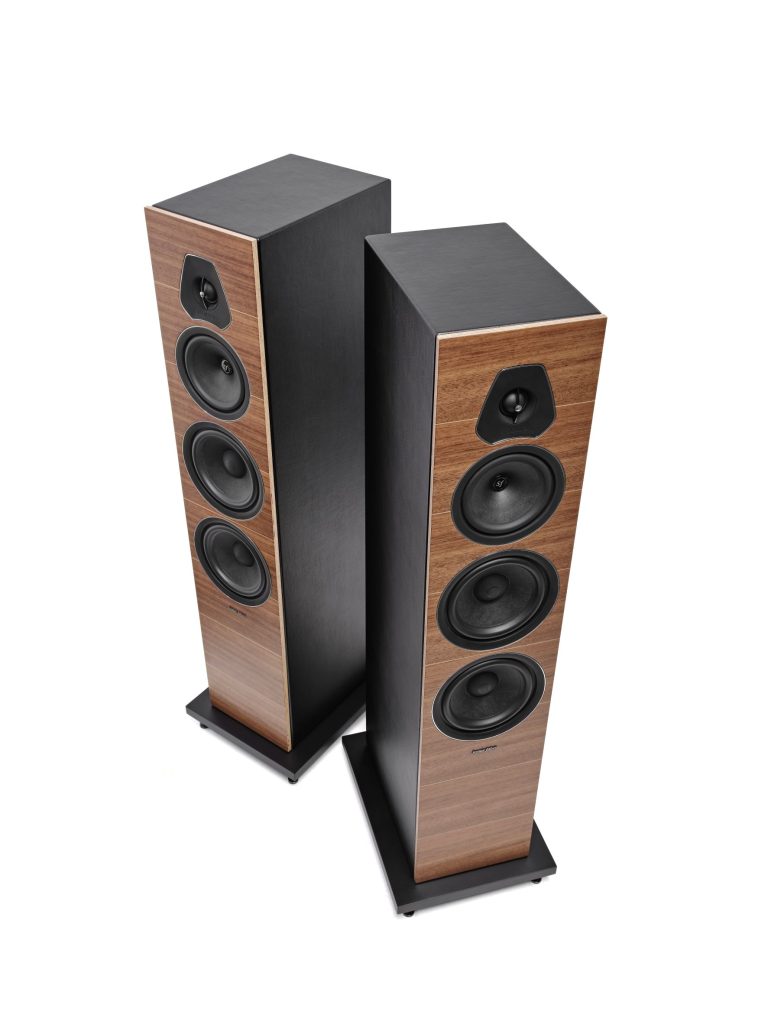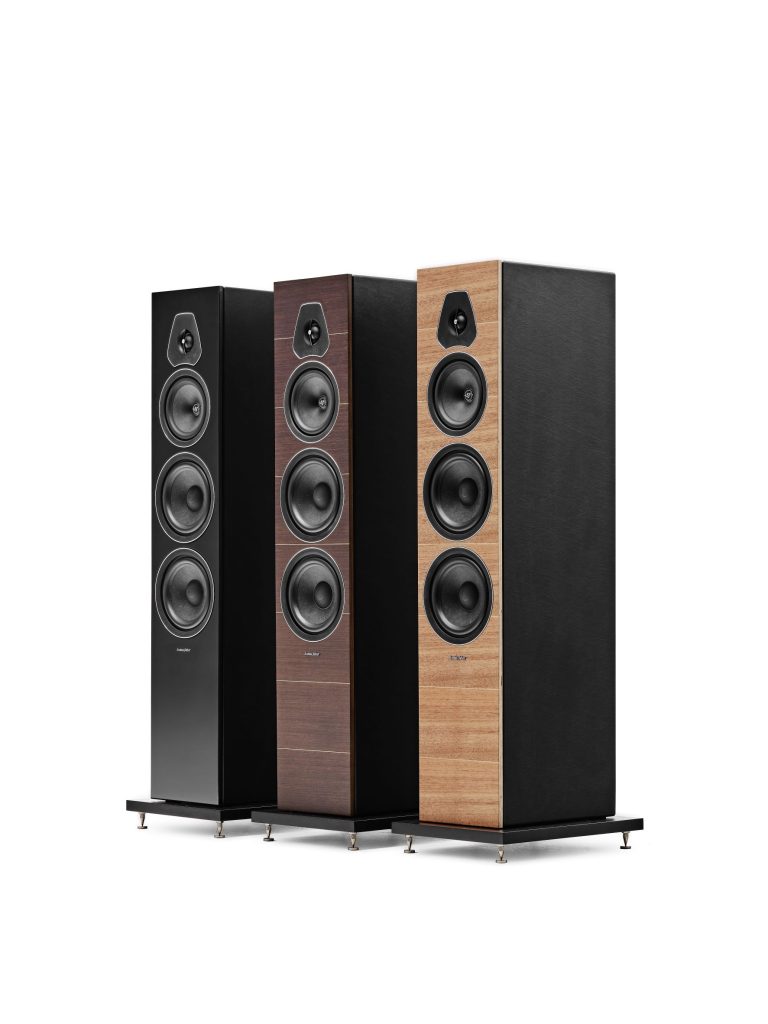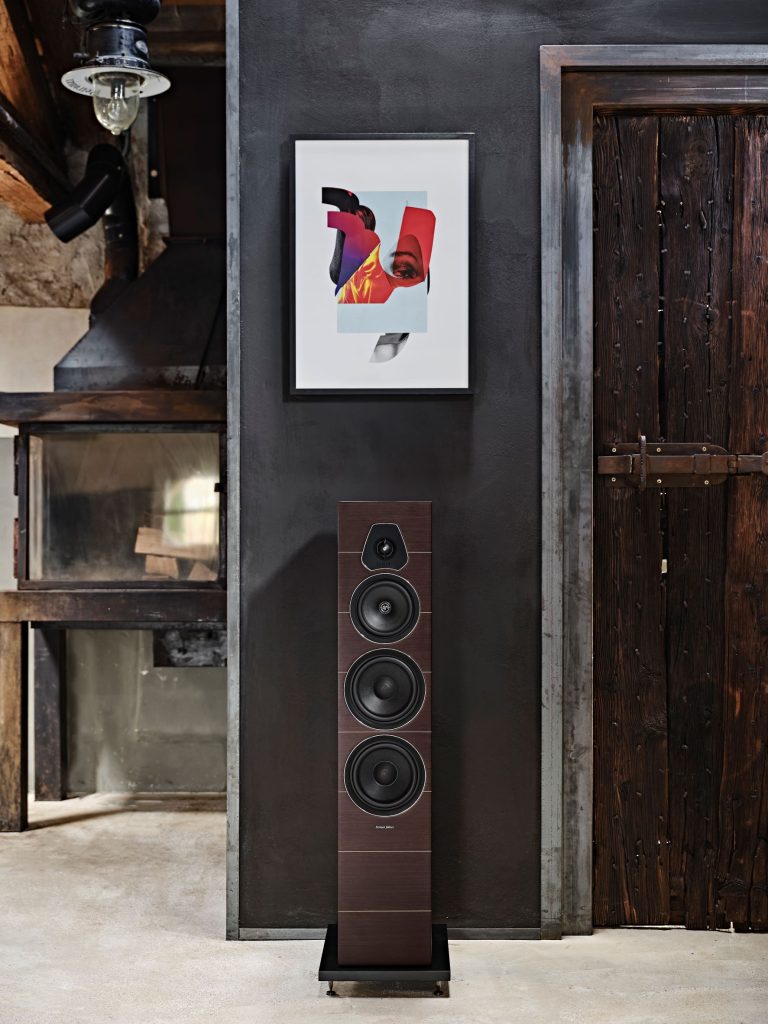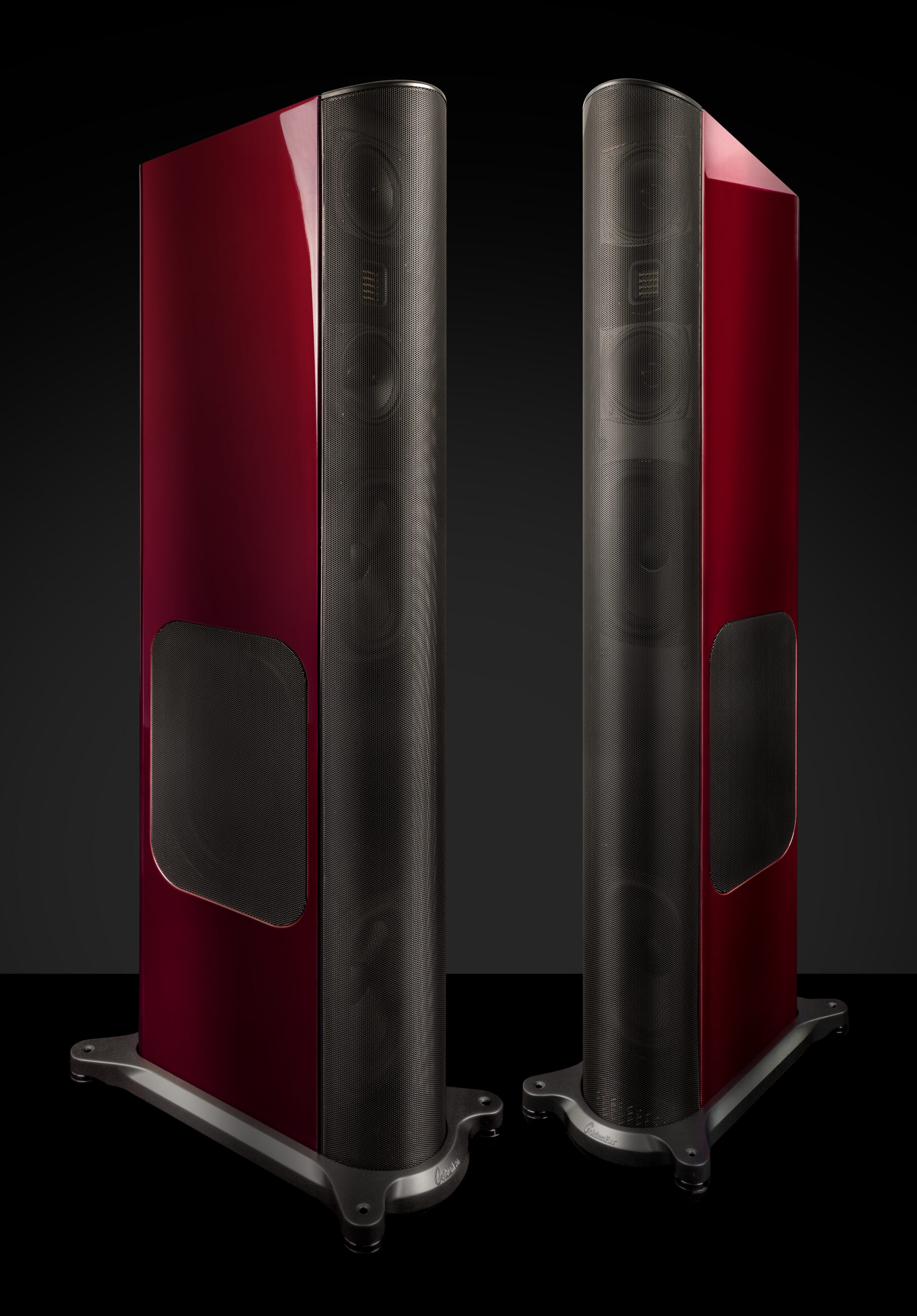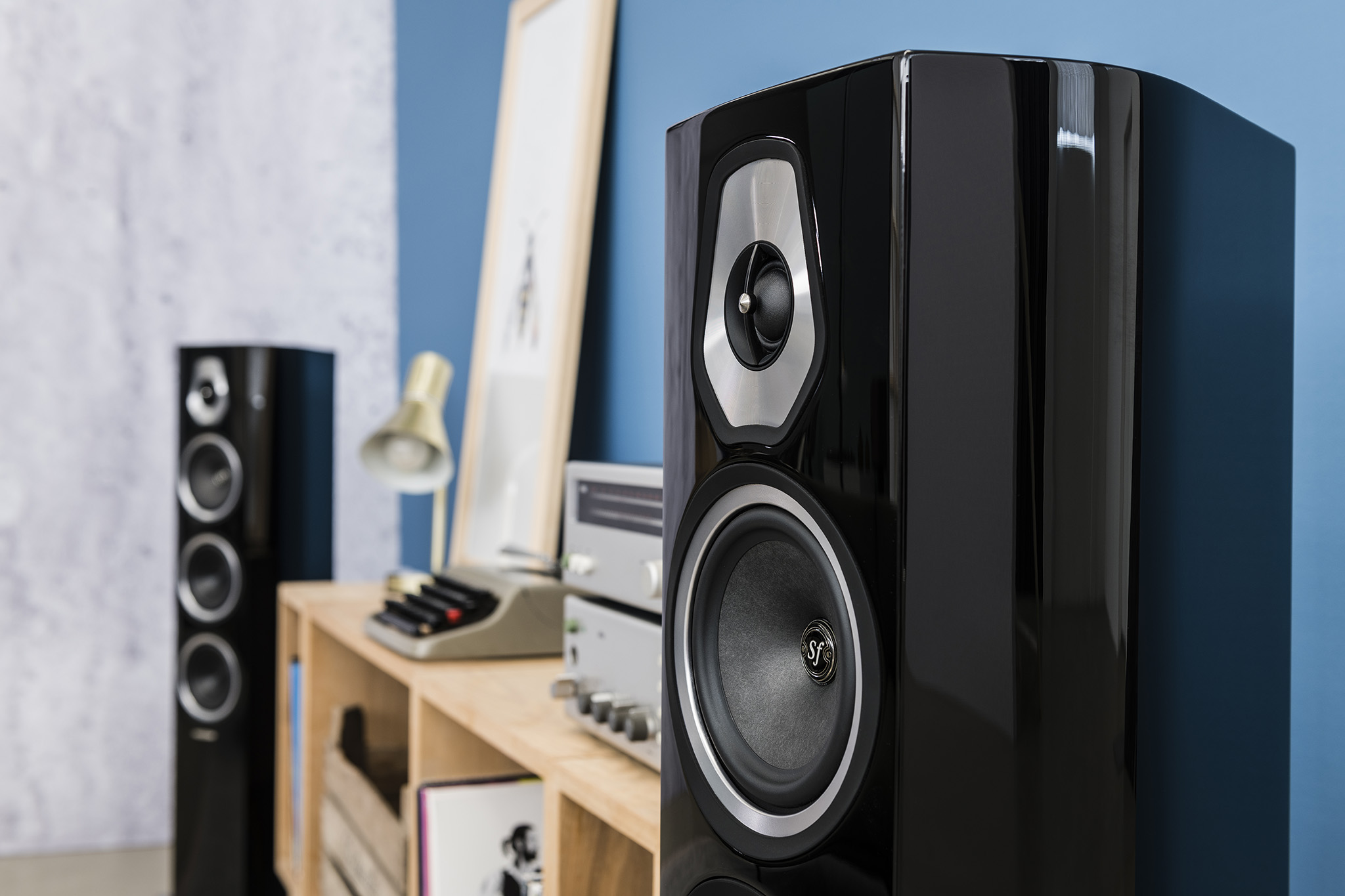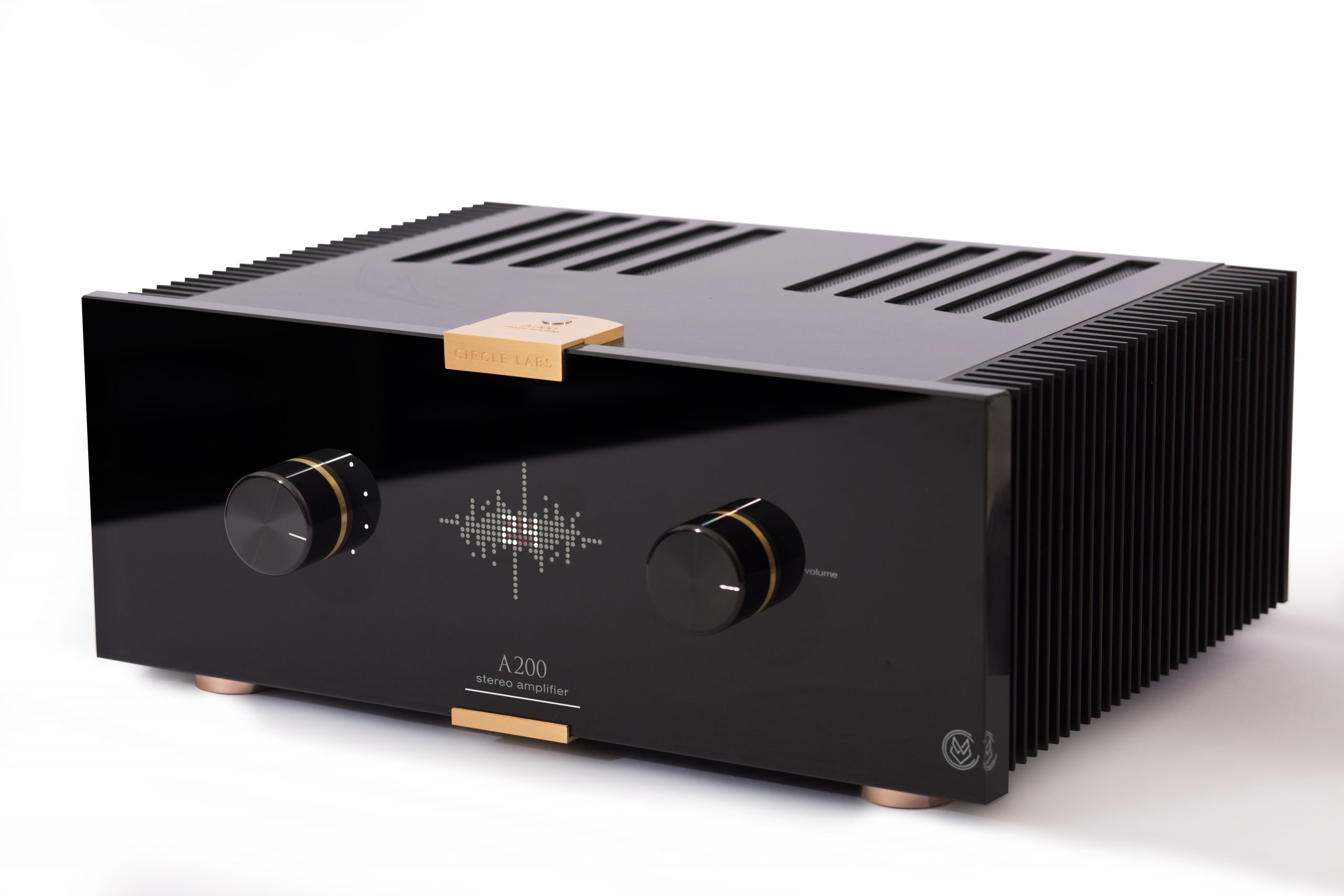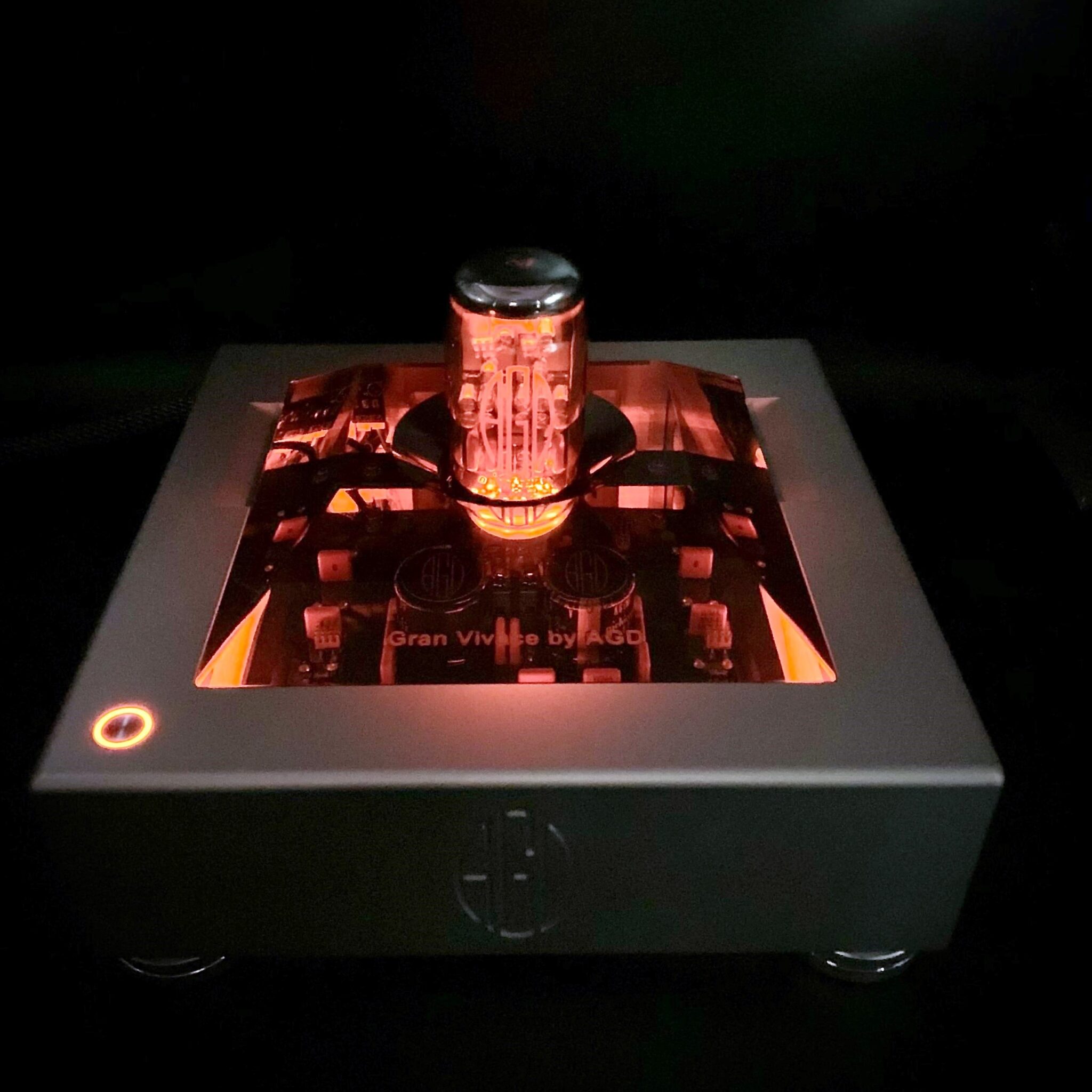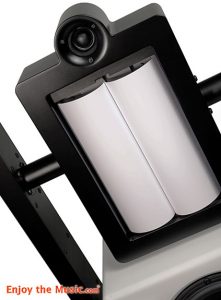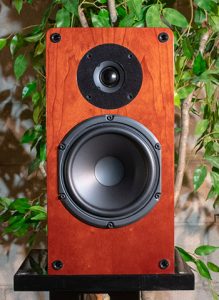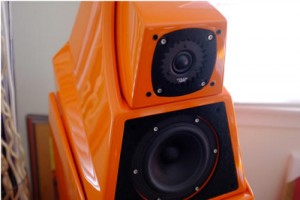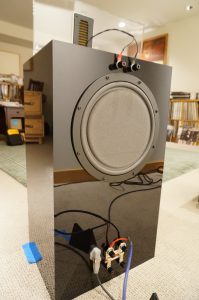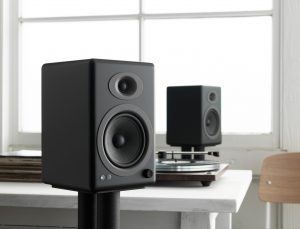It was 1996. A young man rolled up into a now defunct Tweeter Etc. audio shop. Despite the wide-leg skater jeans, chain wallet, Caesar cut, rock t-shirt, and an oversized flannel lazily draped upon the coat hanger shoulders of this adolescent who just had a growth spurt, this apparent trouble with no money was on a mission.
This mission was to listen. You see, this youth had already meticulously read a second-hand copy of The Loudspeaker Design Cookbook by Vance Dickenson several times. He did not know the math very well, but he was confident he could find help with that. He had not heard of Acoustic Engineering yet, and feared power tools, but he did love loudspeakers and how they work, which was a start. What he was trying to understand was: What do great loudspeakers sound like? In his literal sophomoric understanding of the world, Tweeter Etc. was the place to go to listen to inspirational loudspeakers.
I experienced Sonus faber for the first time this day. Fate plays a little role in everything, and it was a quiet day in the store. With nothing better to do, a saleswoman entertained me in their high-end sound room for the better part of two hours. We listened to all sorts of great music on a large pair of floor-standing Sonus faber loudspeakers. The model escapes me. This is a distinct memory because it was the first time I realized there was a high-end. That indeed, there was a next-level loudspeaker, unequivocally superior to the small grouping of "best" I knew. As a short trip further down memory lane: Does anyone remember the JBL "L" Series? It was nearly six months of saving my part-time, coffee-shop salary to get the L1 bookshelf speakers at sixteen years old. However, it was that day at Tweeter Etc. that I realized one could not only listen to, but experience music.
Sonus faber entered, and exited, my listening life a couple of times after that. Both experiences were what could be considered reference level. First was with the "Electa Amator" stand-mount loudspeaker, then with the "Guarneri Homage." When I received word the kind folks at Sumiko design, the US importer for Sonus faber, were interested in letting me experience the flagship loudspeaker of their entry-level collection, the Lumina V loudspeaker, the opportunity met me with mixed emotions…
Simplicity
The Lumina V is a true 3-way floor standing loudspeaker. It has a small footprint, no larger than the base of a good stand for a monitor loudspeaker. The immediate impact of opening the boxes was: There are zero corners cut regarding the fit-and-finish of this "simple" series of loudspeaker. Sonus faber has extremely high craftsmanship standards. The Lumina V continue the tradition of representing the fine, Italian craftsmanship that Sonus faber is known for. So much so they are far more handsome than many loudspeakers costing several times their price. The pair I received were in the wenge finish, however walnut and piano black are available as well.
Well, except for the clunky, 90's binding posts on plastic plates. The binding post plates do accommodate bi-wire/bi-amp configurations and are adequate in quality, however this concerned me because it was the first looming sign, the Lumina V may just be a pretty face with the internal, unseen corners cut. I have never had a pleasant experience when a top-tier loudspeaker manufacturer goes for the entry-level market. It always feels like a business decision, not a musical one.
Compounding this issue is the "one speaker to do it all" approach to marketing loudspeakers for the combination of home cinema, and two channel listening. It is easy to do more harm than good in this extremely saturated, entry-level arena, especially to one's reputation as manufacturing some of the finest loudspeakers in existence.
Well, shame on me. My assumptions were wrong.
I should not have gotten so wrapped up in the availability bias of prior undesirable experiences because the Lumina V is a complete package which performs as elegantly as it looks. I should not have expected less from Sonus faber. Simplicity is a funny word, because it does not mean that something simple lacks precision or detail. In fact, this is the very definition of elegance, no? The Lumina V possesses a similar level of elegance I found in the Circle Labs A200 Integrated Amplifier (HERE).
On the Shoulders of Giants
The Lumina collection of loudspeakers receives trickle-down technology from all Sonus faber's offerings. The "Hybrid IFF Crossover-Paracross Topology™" was utilized in their Maxima Amator loudspeakers ($15,000/pr USD). Sonus faber also includes its "Lute" cabinet technology for the midrange that was developed for many of their finest offerings, and is cleverly utilized in the Lumina V to minimize standing waves and maximize cabinet rigidity.
Yet there are times where high-performance trickle-down technology does not always bode well for entry-level offerings. We see this on the street when someone makes a heavy investment into a late model automobile, donning it with precision parts meant for the race track, but the engine is still 130,000 miles mature. In opposition to our automotive example, the sprinkling of flow-down technology is a smart choice by Sonus faber.
They understand that loudspeakers are about how all the parts make the whole. Balance is important. Sonus faber chose specific technologies that work in harmony with each other, and can be universally applied across all loudspeakers in their collections.
This discussion can easily lead down the very dark and musty hole of measurable vs. audible performance, and I do not feel like going there in distraction of what a great loudspeaker the Lumina V is. I do align with Floyd Toole's stance in his book "Sound Reproduction: The Acoustics and Psychoacoustics of Loudspeakers and Rooms." Toole quotes Einstein's saying: "Not everything that can be measured matters, and not everything that matters can be measured." There are so many measurable aspects of a loudspeaker, yet no single measurement (not even flat axial response) can determine its total performance. The best loudspeakers have all aspects of measurable performance balanced, however if you have a single measurement way out of acceptable limits to force another measurement into perfection, there is no possible way the loudspeaker will perform.
This is the very reason I am always skeptical of manufacturers who rest their laurels on a single, strong element of design such as special cabinet material, or funky high-tech drivers. A loudspeaker is a very complex, electro-acoustical transformer, coupled to the air, the room, then to a human, Sonus faber shows that they understand this concept well, and this understanding is the very reason the Lumina V is a true high-end loudspeaker, even at $2700 USD/pr.
For loudspeakers, the devil is always in the details, and the Lumina V does not lack detail. I found this for the first time when affixing the heavy-duty spikes to the base of the cabinet. I noticed a piece of material covering the internal termination of the large, reflex port on the bottom of the cabinet. This acoustically transparent material is there to prevent a foot from accidentally being dropped into the loudspeaker cabinet during installation. Imagine a loudspeaker company that moves beyond the acoustic design details, and into the ergonomic ones for sake of their customer's experience with their product? Imagine a company that does so on their entry-level offerings? Impressive.
A full list of technologies and specifications for the Lumina V can be found HERE. Though, Sonus faber seemed to be playing coy on their website, since they do not mention much about the drivers used in the Lumina Collection. The biggest advancement in loudspeaker technology in the past 80 or so years has been the loudspeaker drivers themselves. Utilization of accurate measuring devices, powerful software, analysis into the vibrational behavior, magnetic interactions of the motor components, and the materials used for the cones/domes, loudspeaker manufacturers can develop drivers that are affordable, but perform exquisitely.
From the first few notes of the Lumina V, I had a hunch these technologies were utilized. One of the more important technologies that applies to loudspeaker driver design is called Finite Element Analysis (FEA). FEA uses complex mathematical models to quantify real-world behaviors of materials so an engineering team can better understand how it reacts to real-world conditions. FEA is used to analyze the behavior of airplane wings, precision robotic bearings, and many other very sensitive devices that require an extreme attention to their functional behavior, so why not apply it to loudspeaker drivers?
Over the past couple of decades, FEA has become utilized more throughout the audio industry, however it is still struggling to make it to the entry-level, high-end market since the utilization of it can be very expensive to execute well. Sonus faber refused to leave this opportunity on the table when developing the drivers for the Lumina Collection. Subtle details on the woofers such as the large spider, specialized sandwich cone, and heavily vented frame were the first indications that FEA was utilized in their design.
The midrange was not left out of this equation. All too often, manufacturers will take a small woofer from their stand-mount offerings and use it as the "midrange" in their entry-level tower loudspeakers. This is not the case in the Lumina V. Sonus faber chose to use a specialized, dedicated midrange driver for the critical frequencies our ears are most sensitive to. Midrange drivers are often overlooked in today's loudspeakers since woofers, and mid-woofers have gotten more advanced, which makes them easier to cross over directly to a tweeter.
Even though they look like woofers, dedicated midrange drivers are built differently. Since they will not produce the extreme wavelengths woofers do, midrange drivers often use lighter-weight cones and smaller voice coils. This combination makes the whole motor/cone assembly weigh less, improving efficiency and transient response. Woofers utilize the cone movement for cooling the voice coil. Midranges do not have this luxury. Typically, midrange drivers utilize tighter tolerances, like that of a tweeter, to improve thermal performance reducing power compression and distortion.
Entry-level or not, there are no details missed in the design of the Sonus faber Lumina V. After unearthing these details, the most important part of any component evaluation, the listening experience, made much more sense.
Performance
Evaluating loudspeakers can be a difficult task. There are many times when a good loudspeaker will reveal weaknesses in a system. All too often, the unearthed weakness will get "blamed" on the loudspeaker. It became habit for me to audition loudspeakers, even those at the entry level, with the best electronics an audio shop had to offer. The good sales people had fun with this, others were not so entertained.
While ultimate electronics with budget loudspeakers may seem counterintuitive at first blush, it allows the ability to narrow the field of loudspeaker candidates to only those I found to be great performers. I would then audition with the level of electronics I possessed. I decided to take this methodical approach with the audition of the Lumina V.
The first system I chose for the audition:
- Bricasti Design M1 DAC
- Bricasti Design M20 Preamplifier
- Bricasti Design M15 Amplifier
- Cardas Clear interconnects
- Clarus Duet power conditioner
- Custom loudspeaker cables – high purity copper, 8AWG multiple winding.
The second system I chose for auditioning:
- Bricasti Design M1 DAC
- Parasound P6 Preamplifier
- Quicksilver Audio Sixty-Watt Mono KT88 Tube Amplifiers
- Cardas Clear interconnects
- Clarus Duet power conditioner
- Audio quest Type 4 speaker cable
Like Loudspeakers, a listening rig is truly a sum of its parts. A thoughtful, modest system can portray the musical message just as well as an exotic one. Sure, I will always enjoy a more immersive musical experience, but this great passion of ours does not need "the best" to be deeply enjoyed, which is something I love dearly about audio.
The Lumina V were set up using the Cardas room set-up guide HERE. I had to tweak it a little for better low frequency performance in my individual situation. Through the trial of several set-up methods, the Cardas guide provides the most consistent results from loudspeaker-to-loudspeaker, and gets my nod. Set-up is absolutely critical for loudspeakers. I am not going to sugar coat this: The room becomes coupled to the loudspeaker. If you do not take the time to set any loudspeaker up properly, the musical experience will be compromised.
The Lumina V's performance was sophisticated, mature, and complete from top to bottom. These qualities were consistent in both systems. So much so that I was questioning how Sonus faber could possibly put out a loudspeaker as good as the Lumina V for $2,700/pr. USD, and still manufacture them in Italy. It only took the first few notes to hear the cumulative years of engineering and understanding of music Sonus faber leveraged in the design of the Lumina V.
I have always loved down home, southern Americana and Blues. Finding what I love has become infinitely easier thanks to Qobuz. I happened across Rhiannon Giddens' They're Calling Me Home when it was released back in April. I found this album featured in the new music section of Qobuz's main screen. The 24-bit/96 kHz recording is masterful in how it captures Rhiannon's dark, yet pure voice as it dances with the multi-instrumentalist Francesco Turrisi's mastery.
All it takes in the first few seconds of the title track is the squeeze of an accordion playing a single, soft note to reel a listener in. This sets the stage for Rhiannon's voice to come in strong, and with conviction. The Lumina V engaged my ears by getting the timbre of a harmonically difficult instrument perfect while maintaining its integrity as Rhiannon entered my room. We are now 40 seconds into "They're Calling Me Home" and Francesco adds a harmonic 5th that is softly fluttered then matched by a Viola that Rhiannon so delicately plays. The Lumina V left no detail on the table, and built their combined musical message with deep, emotional impact.
Sonus faber is known for making loudspeakers that appeal to the classical crowd. I believe therefore, even in their value-based collection, acoustic instruments and voice have a genuine purity and body to them I would not expect out of a loudspeaker on the level of the Lumina V. The body is not one of a false warmth, typically injected into the design of a loudspeaker to cover the sins of a tight budget, though it should be noted the Lumina V is tuned more on the warm side of the timbre spectrum. The body I am discussing is the actual harmonic resonance and integrity of the acoustic instruments being leveraged by the performers. Accomplishing this feat can only be done with very careful crossover work, and low distortion drivers. Integrity is not something that can be faked, or forced into a loudspeaker.
Thanks to my experience with Sonus faber in the past, I should not have been surprised with the performance of They're Calling Me Home. Moving on to something more challenging: In 2014, Ben Howard's musical journey bubbled up from the musical minutia to produce an album that danced with my musical taste. I Forget Where We Were Is a solid "C+" recording that highlights Ben's dark composition of British Folk/Rock.
If all one listens to is perfect recordings, one will miss a lot of great music. This album is a great example since the recording is satisfactory, but can become messy when the music gets complex thanks to an overabundance of compression. Typically, during these times of compressed presentation, the music is quite beautiful, with edgy guitar, Ben Howard's voice, and well recorded percussion playing in sophisticated synchronization with everything.
The Lumina V handled this tricky recording with the same grace and poise found in Rhiannon Gidden's high resolution offering. "Small Things" is a beautiful and soulful journey. I found the Lumina V to get the dynamics of this track as I would expect them for a dual 6.5" woofer, modest-size tower. On each first beat of the verse, there is a deep, percussive underpinning that should be near the lower limit of the Lumina V's capabilities. The Lumina V produced this well, and did not sound small. Moving to the opposite end of the spectrum, I simply loved what the D.A.D tweeter was doing with the cymbals, and transient queues. I often find the failing power response of large dome tweeters above 10Khz to be a problem in terms of room integration of a loudspeaker, yet the Lumina V did not seem to exhibit this dulling of the edges on the extreme top end. Very well done, Sonus faber.
The performance did not end there, however. The percussive tom-tom drums, which seem to talk during the chorus, had wonderful attack-to-body transition, and never got lost to the background of the lead instrumentation and vocals. There may have been a hint of congestion at times in the upper bass. I tried fleshing this curiosity out a bit, however it was inconclusive if it was the Lumina V, or my room. Regardless, it was not distracting, and benign in nature. No less, The Lumina V kept all its desirable qualities in scale, and handled my thirst for volume as I rocked out to the dramatic end of "Small Things."
I found the Lumina V to not force over-achievement, rather exhibit tremendous execution in their proper scope and scale. No, they did not scale up as my main, dual 10" woofer, 4-way loudspeakers do. They shouldn't. It would be a shame on me for expecting such performance. However, I have heard too many times to count, the shortcomings of a reputable manufacturer when they try to get too much from a modest product offering. The apparent philosophy Sonus faber took with the Lumina V was uncanny: Don't try and make a modest loudspeaker more than it is, rather perfect what it can do.
Let's close this listening session with a classic. I believe this album needs no introduction. The Alternate Blues has too many jazz greats to list here. Though, the album is fronted by the amazing trumpet works of Dizzy Gillespie, Freddie Hubbard, and Clark Terry. This studio recording, which is a reissue of the Pablo LP, has everything a jazz lover wants; right down to capturing these great musicians' jaw in the background about the fun they are having during solo transitions. These touches give a sense of being in the studio with them, and does wonders for setting the mood.
It is no surprise then, the Lumina V grabbed hold of this recording and brought me right into the room with these greats. Much of this was thanks to how well the Lumina V presented a wide, deep, and balanced soundstage. It was nice, too that this performance was preserved whether it was with the monster Bricasti M15 Amplifier, or 60 watts of point-to-point, all-tube goodness of the Quicksilver 60-watt monos.
I took a measurement of the impedance profile of the Lumina V, and while they are not going to be driven by a flea-watt SET, any modest tube amplifier with 4-ohm taps will have no problem making them sing. There were no major concerns, and what will help lend them to tube amplification is the reasonable electrical phase loading they present to the amplifier above 100Hz. Below 100Hz, the impedance exhibits the typical "double bump" of a vented enclosure.
I would recommend 50 watts minimum of tubey goodness if you need them to really fill the house. More modest listeners could use 30 watts to moderate levels without a problem. Their efficiency, too, is not over-inflated. A solid-state route I would suggest would be to throw the Lumina V on a budget class A amplifier like the Lindell AmpX, and one would have a serious back-end of an affordable, "buy once" system. As always, however, the more high-quality power, the better. That's a universal loudspeaker law!
What else is there to say?
The Lumina V is a complete package which performs as elegantly as it looks, and I should not have expected less from Sonus faber. Aside from cheesy plastic binding post plates, and a hint of stuffiness in the upper bass, the Lumina V is a true, high-performance loudspeaker, which is remarkable for $2700.00 USD/pr. In modest-sized rooms, it will not take much to get the Lumina V bringing you into your music, regardless of genre.
Loudspeakers are extremely constrained by their physical limitations. No company, designer, or amount of money can overcome these limitations. Instead, it is best to work within these constraints.
Sonus faber did not try and beat physics, rather leverage their technology to control as many small details that are inherent in the design of any loudspeaker regardless of size, shape, or expense. To me, this is the only viable approach to making an entry-level loudspeaker that, within the scope and scale of the loudspeaker's design, performs at an extremely high level. The cherry on top? The Lumina V is wrapped up in fine, Italian cabinet work that makes them look as good as they sound. I give the Lumina V my highest recommendation.
Lumina V
Retail: $2700 USD/pr.
Sonus faber S.p.A.
Via A. Meucci, 10
36057 Arcugnano (VI) – Italy
+39 0444 288788
US Distribution
Sumiko Audio
11763 95th Ave N
Maple Grove, MN 55369
510.843.4500




